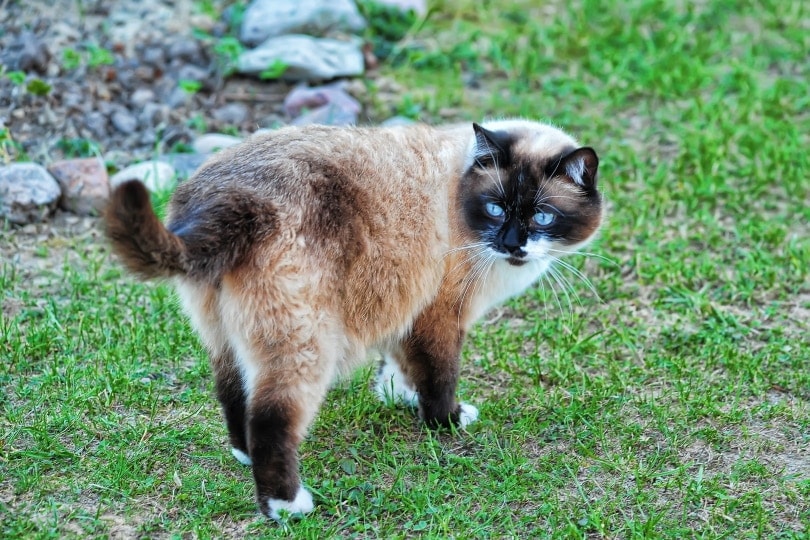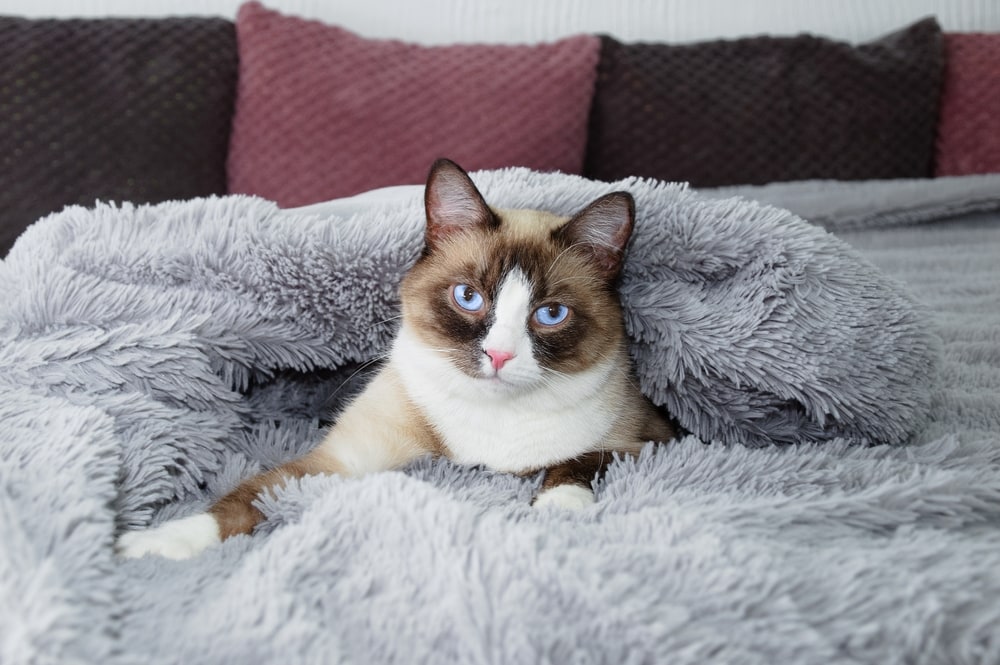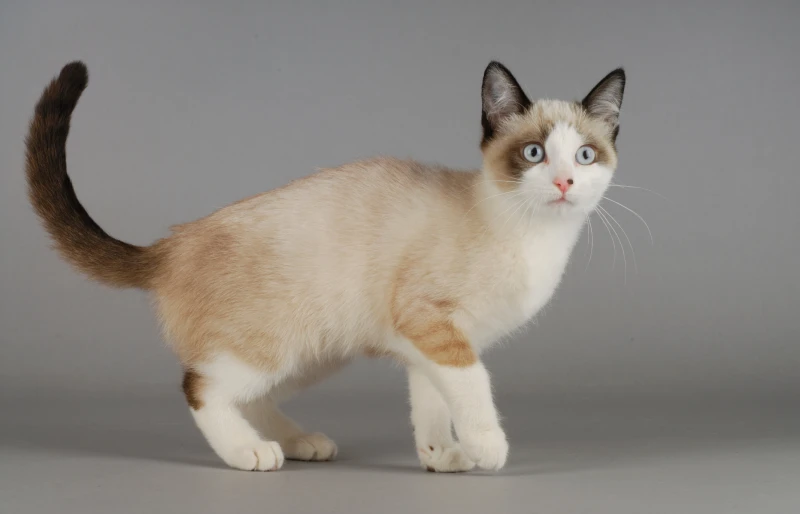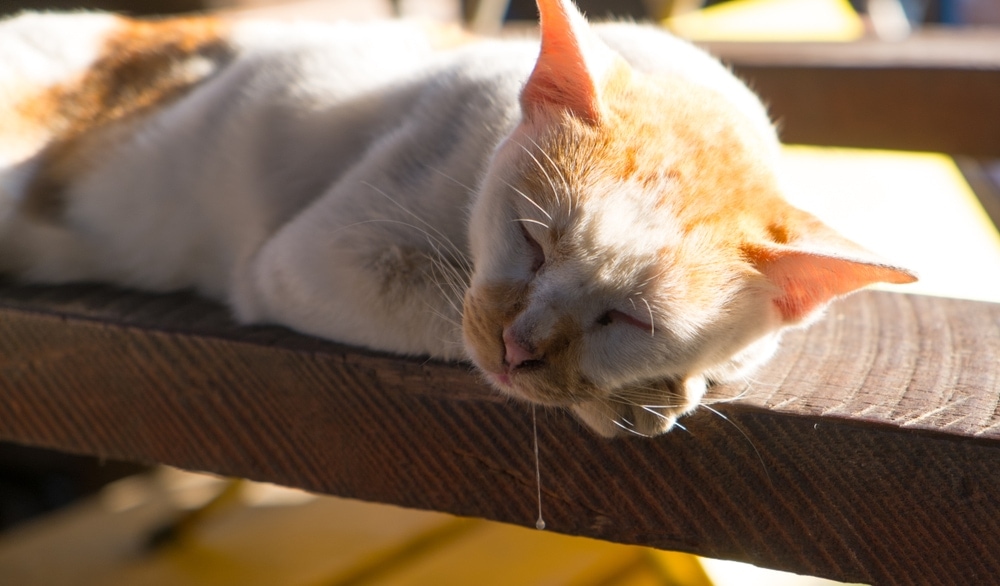How Big Do Snowshoe Cats Get? Average Weight & Growth Chart

Updated on

Click to Skip Ahead
Snowshoe cats are popular pets because of their bright blue eyes, sweet and playful demeanor, and distinguishing “snow boot” paws. However, like all new kittens, their adorable, tiny kitten phase seems to pass by so fast! If you are the new owner of a snowshoe cat or are thinking about adopting one, it’s helpful to know how fast they grow so that you can provide them with the necessary care for their life stage and the best diet for weight maintenance. Snowshoe cats can weigh 7–14 pounds and range in height from about 8–13 inches.
It is also helpful to know their potential size to determine if your cat may be experiencing health issues that need attention. Here is an in-depth guide to how big your Snowshoe cat can get and how you can safely maintain their weight.
Snowshoe Cat Overview
Snowshoe cats are a unique breed characterized by their white feet, which gave them their name. Their lovely pointed coats are another feature that sets them apart. Snowshoe kittens are all-white when they are born, but they develop dark features as they age.
The Siamese and American Shorthair characteristics are beautifully combined in the snowshoe breed. In general, snowshoe cats are friendly, affectionate, and laid-back. They get along well with people, appreciate attention, and get along with other animals and children.
Snowshoes are not solitary cats and find it difficult to be content when left alone for extended periods of time. They usually bond with one pet parent, so they may be the ideal companion for a solitary human.

Snowshoe Cat Growth & Weight Chart
While we can offer you a rough sense of what to anticipate as your Snowshoe cat matures, you must remember that every cat is unique, so don’t be overly concerned if your kitty differs somewhat from the chart below.
Snowshoe cats come in various sizes, with females often being smaller than males. They can weigh 7–14 pounds and range in height from about 8–13 inches. There are other factors that affect the growth of your Snowshoe cat, and this chart will just provide a rough estimate.
| Age | Female Weight Range | Male Weight Range |
| 3 months | 3–4 pounds | 4–5 pounds |
| 6 months | 4–5 pounds | 5–6 pounds |
| 9 months | 5–6 pounds | 6–7 pounds |
| 1 year | 6–8 pounds | 8–9 pounds |
| 3 years | 8–12 pounds | 10–14 pounds |
When Does a Snowshoe Cat Stop Growing?
Most kittens become adults in 1 year when their personalities and bodies have fully developed. A cat’s growth, however, will be unique to each individual. Weight stabilization, minor adjustments in body shape, and a decrease in playfulness compared to kittenhood all indicate that your kitten may have stopped growing.
A helpful way to determine when your cat stops growing is to weigh and measure them at least once a month. Once the weight and length stop increasing, it indicates that your cat has stopped growing.

Factors Affecting the Size of Snowshoe Cat
While a few factors will affect the size of your Snowshoe cat, nutrition and genetics are the primary factors. Kittens are more likely to grow to their full potential if they receive the right nourishment and care during their growth stages. Furthermore, genetics will also affect your snowshoe’s growth. The age at which your cat is neutered or spayed also impacts the size of your Snowshoe cat, by removing hormones that influence growth.
Ideal Diet for Maintaining a Healthy Weight
As a result of a variety of factors, including their activity level, neutering status, body condition, and age, all cats have slightly varying caloric needs. The best way to determine your Snowshoe cat’s caloric needs is to consult your veterinarian.
Similar to people, underweight or overweight cats are more likely to experience health issues than cats at their ideal body weight.
Unfortunately, most cats in the US are more likely to be overweight than underweight. Cat owners should take care to prevent an underweight cat from losing weight and an overweight cat from gaining more.
Your Snowshoe cat needs healthy and age-appropriate food to maintain a healthy weight and requires a high-quality, protein-rich diet. You should avoid free-feeding your cat and serving table scraps and too many treats.
If your Snowshoe cat tends to overeat, you can schedule your cat’s feedings using an automatic feeder. If your cat continues to gain weight, it may need a diet change, which you can discuss with your veterinarian.

How to Weigh Your Snowshoe Cat
Any standard scale can be used to calculate your cat’s weight, however more accurate weights are obtained through human baby scales or similar. Try placing your cat in a cardboard box first if you’re having difficulties keeping them still on the scale.
Most cats quietly lie down in a box because they like it, but remember to deduct the box’s weight from your measurement. You could also weigh yourself first, then your cat, and subtract your weight from the total amount. What’s left is your cat’s weight, which may not be precise but can be a starting point.
Conclusion
The Size of Snowshoe cats varies, with females frequently being smaller than males. They can weigh between 7 and 14 pounds and are 8 to 13 inches tall on average. Their size and weight will stop increasing within the first year of their life when their growth and weight stabilize.
Many factors can affect how fast your Snowshoe grows and how much weight they gain, such as their lifestyle and diet. Regular veterinary checkups and weigh-ins are essential to ensuring your cat is in their best shape and reaching the necessary stages of growth and development.
Featured Image Credit: Anna Krivitskaya, Shutterstock









